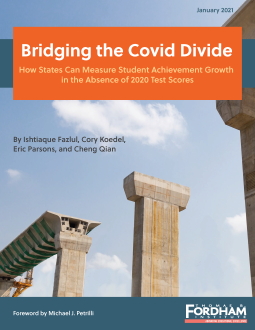When the Covid-19 pandemic hit the U.S. last spring, schools nationwide shut their doors and states cancelled annual standardized tests. Now federal and state policymakers are debating whether to cancel testing again in 2021. One factor they should consider is whether a two-year gap in testing will make it impossible to measure student-level achievement growth during this historic period.
Using administrative data from Missouri from the pre-pandemic years of 2016 to 2019, a team of researchers in the department of economics at the University of Missouri—Ishtiaque Fazlul, Cory Koedel, Eric Parsons, and Cheng Qian—evaluated the efficacy and implications of growth models that reflected one-year versus two-year gaps in testing. Among their key findings:
- District and school growth estimates based on a single-year gap convey similar information to growth estimates based on data with no gap year.
- Student subgroup growth estimates based on gap-year data can also be reliably estimated.
- However, just 27 percent of students attend schools that can generate growth measures if two consecutive years of test scores are missing.
These findings suggest that calculating student growth measures from 2019 to 2021 is feasible even with the gap in testing last year, and that the results are likely to be quite accurate—so long as states test students this year. But if states cancel testing again in 2021, it will be extremely difficult to determine how effective individual schools were during this challenging period in American education. That’s because few students will be in the same school in 2022 as they were in 2019 (elementary schoolers will have moved onto middle school, and middle schoolers will have moved onto high school).
Still, the next few months are hard to predict. If spring testing is still not possible for some states in 2021, they might consider administering assessments when schools reopen in fall 2021, although such a scenario would pose its own logistical, analytic, and political challenges.







